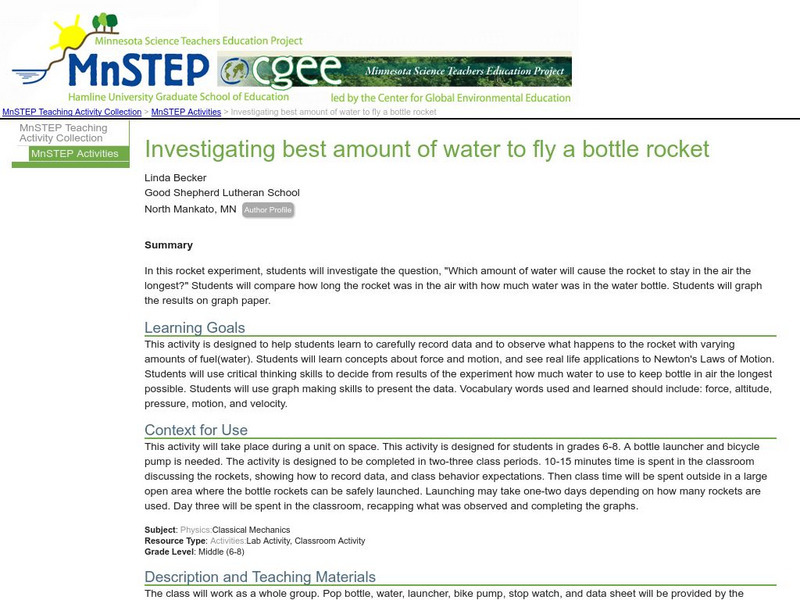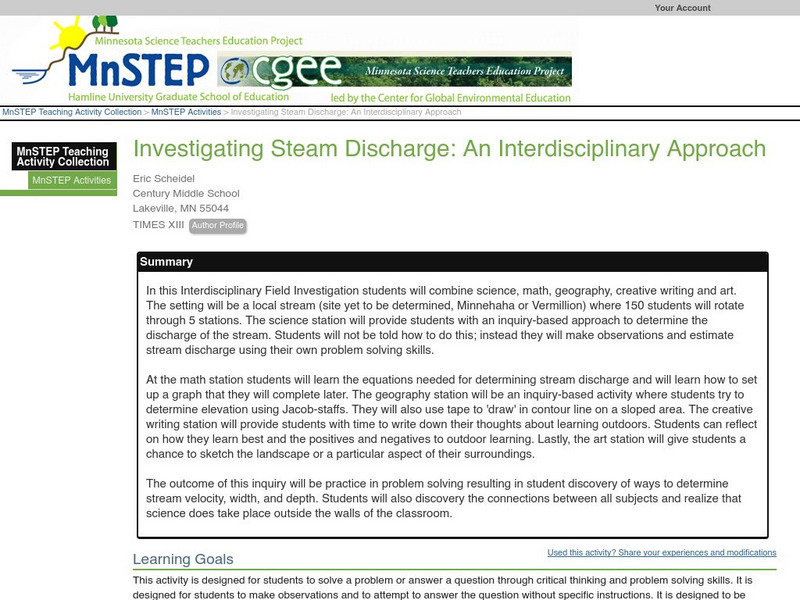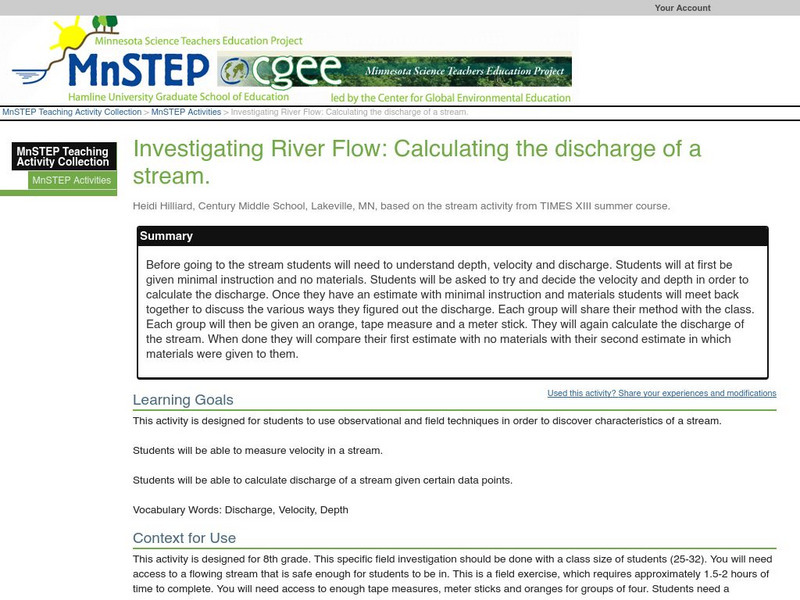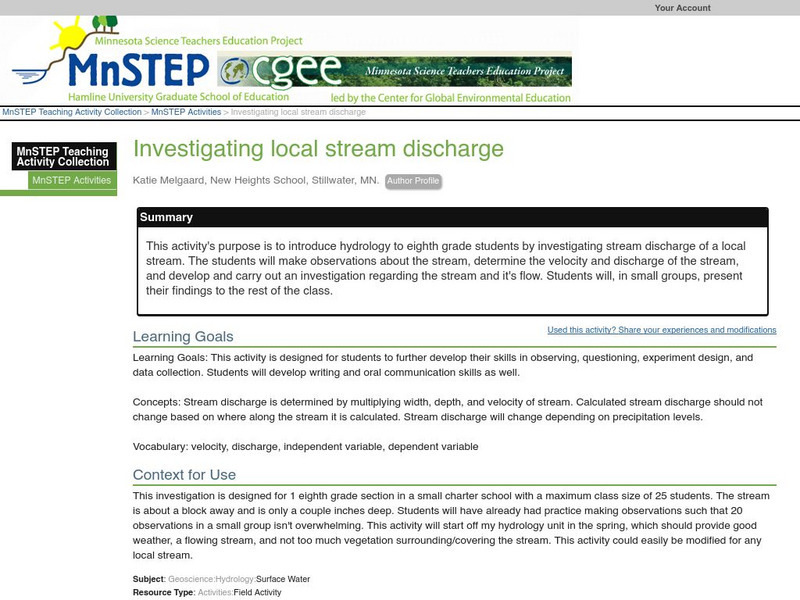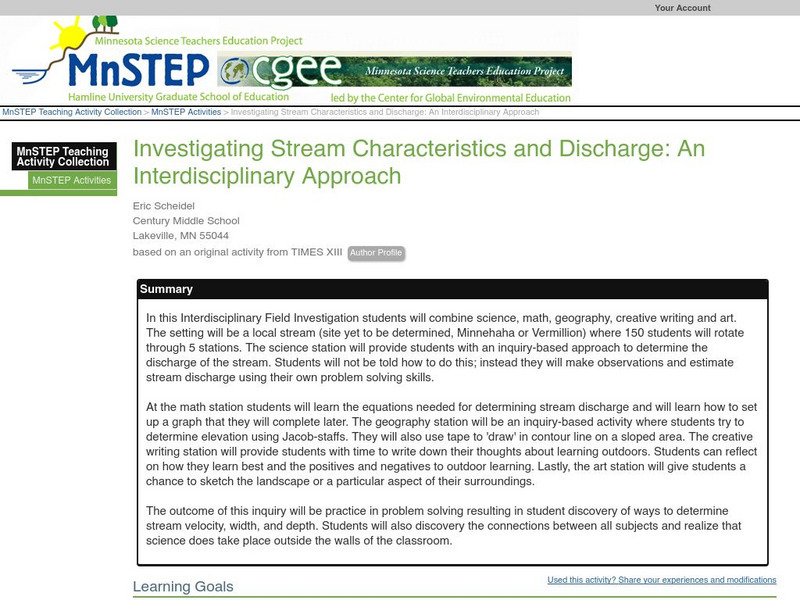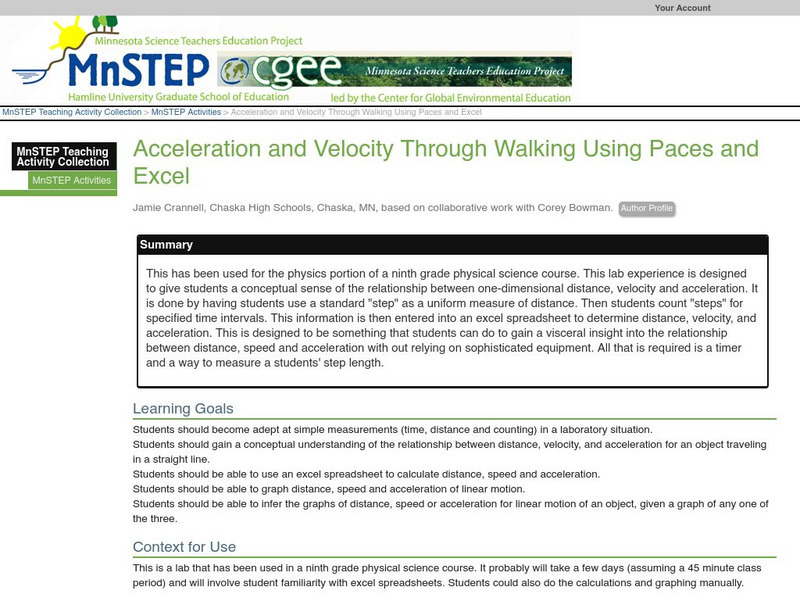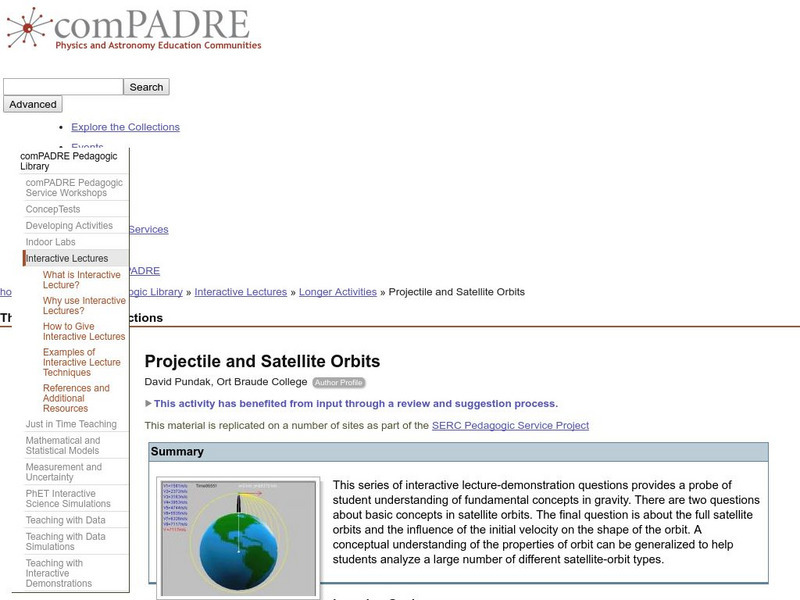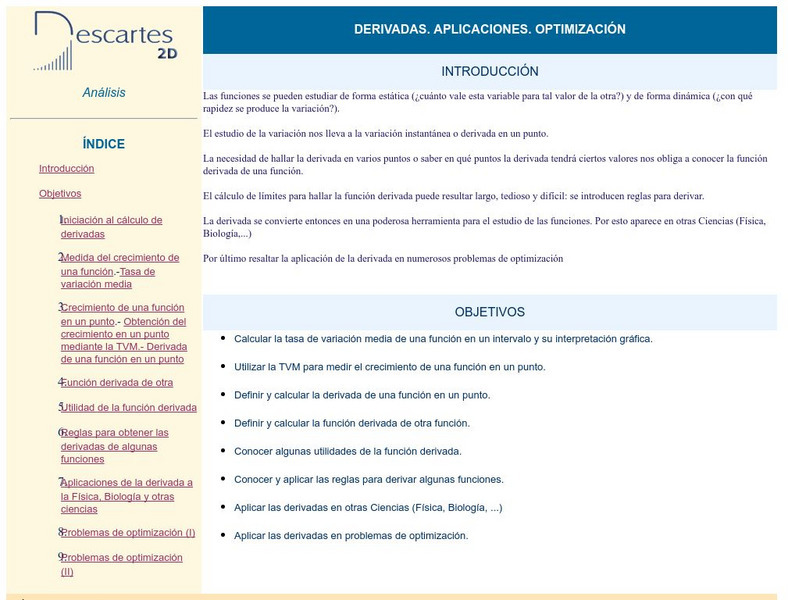Texas Instruments
Texas Instruments: Velocity and the Bouncing Ball
In this activity, students will explore the position of a ball versus time for a single bounce. They will also examine the relationship between the height of the ball and its velocity.
Texas Instruments
Texas Instruments: Relative Position and Velocity
This activity is designed to assess the comprehension of concepts related to relative position and velocity.
Texas Instruments
Texas Instruments: Falling Objects
In this activity, Students can use a Motion Detector to measure distance and velocity.
Texas Instruments
Texas Instruments: Good Vibrations
In this activity, students will investigate the motion of a mass moving up and down on a spring. They collect data for the position, velocity, and acceleration of the mass's motion and examine the relationship between them.
Science Education Resource Center at Carleton College
Serc: Investigating Best Amount of Water to Fly a Bottle Rocket
In this rocket experiment, young scholars will investigate the question, "Which amount of water will cause the rocket to stay in the air the longest?" Students will compare how long the rocket was in the air with how much water was in...
Science Education Resource Center at Carleton College
Serc: Graphing 1 D Kinematic Motion
In this demonstration students are given a position, velocity, or acceleration graph showing the motion of an object. They describe the motion, and then make predictions by completing the remaining two graphs. Using a motion detector and...
Science Education Resource Center at Carleton College
Serc: Investigating Steam Discharge: An Interdisciplinary Approach
In this Interdisciplinary Field Investigation learners will combine science, math, geography, creative writing and art. The setting will be a local stream (site yet to be determined, Minnehaha or Vermillion) where 150 students will...
Science Education Resource Center at Carleton College
Serc: Maximizing Kinetic Energy: An Investigation Using Marbles
Using marbles to construct a marble run, learners will learn about projectile motion, kinetic energy, potential energy, final velocity, and forces.
Science Education Resource Center at Carleton College
Serc: Investigating River Flow: Calculating the Discharge of a Stream
Before going to the stream students will need to understand depth, velocity and discharge. Students will at first be given minimal instruction and no materials. Students will be asked to try and decide the velocity and depth in order to...
Science Education Resource Center at Carleton College
Serc: Measuring Discharge and Flow in the Rum River
Students will travel to a small stream and make predictions regarding stream discharge at the point bar and cut bank. They will make conclusions about how velocity affects erosion and discharge.
Science Education Resource Center at Carleton College
Serc: Investigating Local Stream Discharge
This activity's purpose is to introduce hydrology to eighth grade middle schoolers by investigating stream discharge of a local stream. The students will make observations about the stream, determine the velocity and discharge of the...
Science Education Resource Center at Carleton College
Serc: Motion: Speed of Automobiles
In this activity, students will determine the speed of a moving vehicle using a stopwatch and meter stick, then convert the measurement from meters/sec to miles/hr. After completing this activity, students should understand average...
Science Education Resource Center at Carleton College
Serc: Investigating Stream Char and Discharge: Interdisciplinary Approach
In this Interdisciplinary Field Investigation students will combine science, math, geography, creative writing and art. The setting will be a local stream (site yet to be determined, Minnehaha or Vermillion) where 150 students will...
Science Education Resource Center at Carleton College
Serc: Acceleration and Velocity Through Walking Using Paces and Excel
This has been used for the physics portion of a ninth grade physical science course. This lab experience is designed to give students a conceptual sense of the relationship between one-dimensional distance, velocity and acceleration.
Science Education Resource Center at Carleton College
Serc:investigating Friction:investigate How the Force of Friction Opposes Motion
For this investigation, students will learn that speed, velocity, and changes in velocity are the result of the action of forces on objects such as friction. They will be able to explain how the force of friction opposes motion by...
Science Education Resource Center at Carleton College
Serc: Centripetal Force Activity
In this physics activity, young scholars will simulate a race car on a circular track. Velocity, acceleration, and force vectors will be analyzed at various places along the track. As the students progress in the activity, prompts for...
Science Education Resource Center at Carleton College
Serc: Newton's Second: Having a Ball With Motion
Students will create a gravity ball launcher to demonstrate their understanding of mass, force, momentum, and motion. The students will use critical thinking, measurement, and observation and analysis of data to make changes and improve...
Science Education Resource Center at Carleton College
Serc: Investigating Speed and Velocity
In this investigation, middle schoolers will work in groups to design a model roller coaster, which will be used to clock the fastest speed for the rider (ball bearing/marble) The groups will build roller coaster models and modify and...
Science Education Resource Center at Carleton College
Serc: Experiment Problem in Kinematics: How Much Does It Take to Win the Race?
Students are presented with two cars that have different constant speeds and that will race each other. They then determine which object will win the race, as well as how much time elapses between the objects crossing the finish line.
Science Education Resource Center at Carleton College
Serc: Projectile and Satellite Orbits
This activity introduces gravity and Kepler's Laws and helps to develop an understanding of gravitational force, satellite orbits, and their dependence on the initial velocity.
Science Education Resource Center at Carleton College
Serc: Graph Predictions for Position, Velocity and Acceleration
Learners interactively create predictions of position, velocity, and acceleration graphs using java applets. The applets automatically classify student answers, so instructors can create graphs of student predictions.
Wikimedia
Wikipedia: Centripetal Force
Wikipedia's site on centripetal force provides a section explaining the difference between centripetal force and centrifugal force. Includes formulas and hyperlinked terms.
Ministry of Education and Universities of the Region of Murcia (Spain)
Ministerio De Educacion Y Ciencia: Derivadas. Aplicaciones. Optimizacion.
In Spanish. This interactive unit is intended to show you how to calculate the derivative of a function and the application of the derivative in other sciences.
Physics Classroom
The Physics Classroom: 1 D Kinematics: Table of Contents
Learners examine motion with words, equations, diagrams, and graphs. Some topics investigated are position, velocity, acceleration, and free fall. The tutorial consists of lessons and problems to check for understanding.






